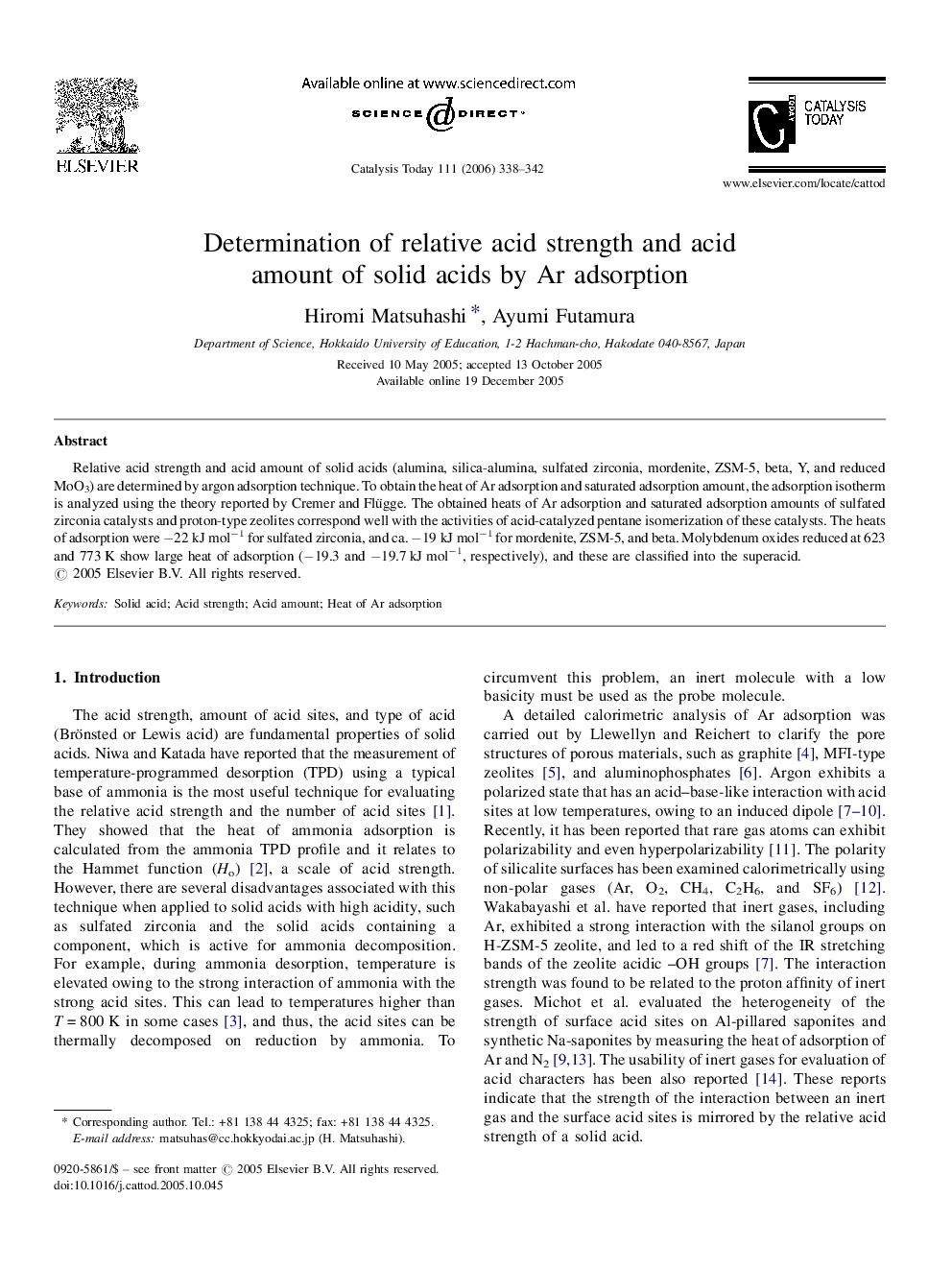| Article ID | Journal | Published Year | Pages | File Type |
|---|---|---|---|---|
| 58631 | Catalysis Today | 2006 | 5 Pages |
Relative acid strength and acid amount of solid acids (alumina, silica-alumina, sulfated zirconia, mordenite, ZSM-5, beta, Y, and reduced MoO3) are determined by argon adsorption technique. To obtain the heat of Ar adsorption and saturated adsorption amount, the adsorption isotherm is analyzed using the theory reported by Cremer and Flügge. The obtained heats of Ar adsorption and saturated adsorption amounts of sulfated zirconia catalysts and proton-type zeolites correspond well with the activities of acid-catalyzed pentane isomerization of these catalysts. The heats of adsorption were −22 kJ mol−1 for sulfated zirconia, and ca. −19 kJ mol−1 for mordenite, ZSM-5, and beta. Molybdenum oxides reduced at 623 and 773 K show large heat of adsorption (−19.3 and −19.7 kJ mol−1, respectively), and these are classified into the superacid.
